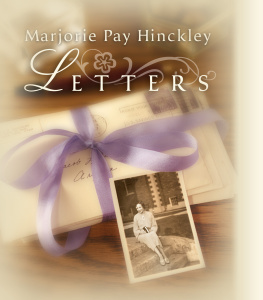The letters published here are extracted from various deposits in the University of Hull collection currently held at the Hull History Centre, as follows:
Deposited by Rosemary Parry (Hewett) in 1994
U DLN/1/31 Picture postcard (24 August 1936) from Philip Larkin to his sister Catherine (Kitty) Larkin (later Hewett): in a group of seven cards sent from Germany between 1933 and 1939, from Sydney to Eva Larkin, Sydney to Kitty (3), Sydney to Philip, Kitty to Philip and Philip to Kitty.
U DLN/3/23 Eleven letters from Philip to his sister Catherine: February 1941September 1943, together with a telegram of 7 July 1943 ( IT SEEMS I HAVE GOT A FIRST ).
U DLN/3/57 Fifteen letters and eight picture postcards from Philip to his niece, Rosemary Hewett (later Parry) (196083), including correspondence of 1966 concerning a visit to Warwick University where she was then an undergraduate studying English and European Literature.
U DLN/3/8 A letter from Philip to his sister Catherine dated 2 May 1947 welcoming the birth of her daughter Rosemary, together with two picture postcards and ten letters from Larkin to Catherine dated 197282. The file is devoted mainly to correspondence with Berrystead Nursing Home, and legal papers concerned with the sale of 21 York Road after Evas death.
U DLN/4/5 Picture postcard sent to Catherine Larkin on 20 August 1946, showing a portrait of Philip.
Deposited by Rosemary Parry (Hewett) in 2008
U DLN/6 Approximately 4,000 letters, lettercards, postcards and picture postcards written by Philip to his parents (193848), and later to his widowed mother Eva (194877); with fourteen letters to his sister Catherine (dated 19404).
U DLN/7 Approximately4,000 letters, lettercards, postcards and picture postcards written to Philip by Sydney and Eva, separately or together (December 1943February 1948), and later by the widowed Eva (194877); with two letters from Catherine to Philip from 1944.
On the morning of Sunday 13 September 1964, Philip Larkin sat in his flat at 32 Pearson Park, Hull, writing a polite, ceremonious letter to his mother, My very dear old creature:
Once again I am sitting in my bedroom in a patch of sunlight embarking on my weekly task of writing home. I suppose I have been doing this now for 24 years! on and off, you know: well, I am happy to be able to do so, and I only hope my effusions are of some interest to you on all the different Monday mornings when they have arrived.
His writing home, as he notes with his customary precision, began exactly twenty-four years earlier in October 1940, when he started his first term at St Johns College, Oxford. He sees the correspondence as continuous since then, but his phrase on and off, you know conceals a major discontinuity. For the first seven and a half years home had been a household of two or three: his father, Sydney Larkin, City Treasurer of Coventry (Pop); his mother, Eva (Mop); and also on occasion his sister, Catherine (Kitty), ten years older than him, who became a teacher of art and design in Leicester, and married in 1944. This phase ended abruptly with the death of Sydney early in 1948. There followed two years during which the poet and his mother lived together and the correspondence was at a halt. The second phase of the correspondence began when Philip departed for a new post in Belfast in September 1950, and lasted for twenty-seven years until Evas death in November 1977 at the age of ninety-one. From this phase the letters which survive are almost exclusively those between mother and son. Kitty seems to have destroyed her letters from Philip after 1947 and only a small handful survive from 196982.
Larkins letters home make a consistent thread through his life. From the beginning, he would usually write, when not living at home, at a rate of more than one letter a week. From the 1940s the archive contains between 59 and 73 letters, lettercards or postcards per year, The handwriting of both is clearly legible and, with few exceptions, both begin each letter with the full date: day, month and year.
Only a fraction of the archive could be included in this selection. In all, 607 letters or cards written by Philip are represented, either complete or in extracts: 82 addressed jointly to Dear fambly or My dear Mop and Pop, 485 to Eva, 20 to Sydney and 20 to Kitty. The selection is to an extent arbitrary. References to literary matters, and to emotional relationships, are included, while repetitive accounts of the weather and familiar routines or responses to Evas news about relatives are cut back. But inevitably many letters of interest, and many amusing drawings, have been excluded. To allow the poets correspondents to be heard in their own voices, and to give context to his letters, an appendix, Letters from Home, is included, comprising one joint letter from Eva and Sydney, ten letters from Eva, seven letters from Sydney and two from Kitty.
The main strand in the correspondence is the humdrum and domestic (Many thanks for the load of beautiful lilies, How long in minutes do you pummel & squeeze a woolly? how exciting about the lavatory!) However the story they tell is psychologically fascinating. When Anthony Thwaite quailed at the sight of all the shoe-boxes full of envelopes, and decided to exclude the family correspondence from the














